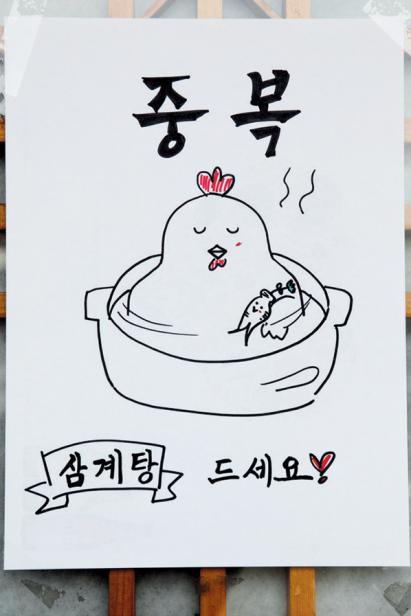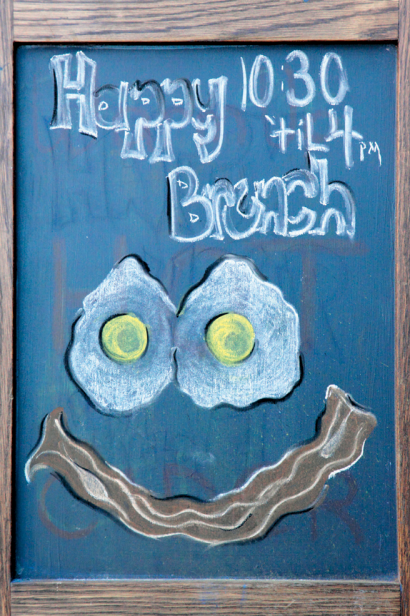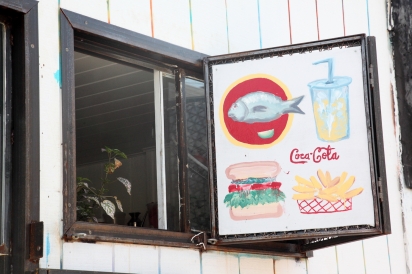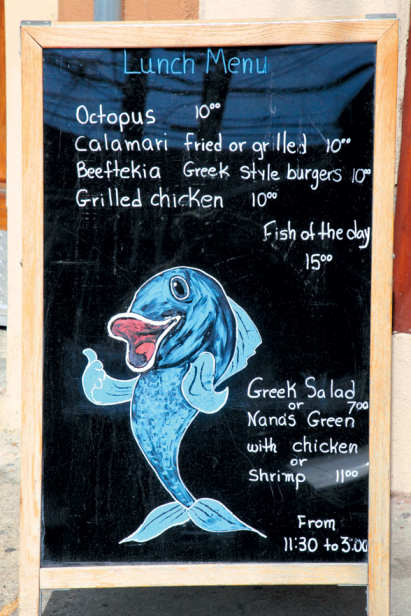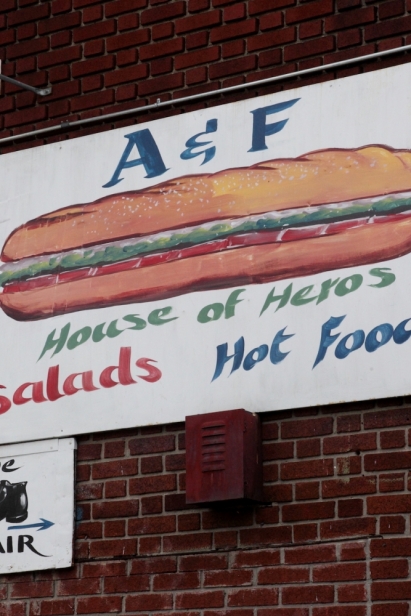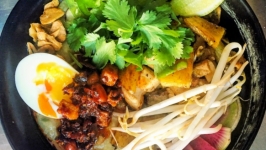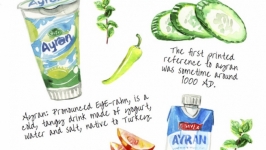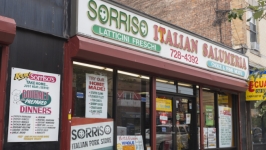Art of Temptation: A Bygone Era of Hand-Painted Restaurant and Food Cart Signage Re-emerges
They beckon, silently, to passersby. They linger near restaurant doorways, press up against the glass of bakery windows, lean against the produce in greengrocers’ outdoor bins and hang beside the service windows of street vendors’ carts. They reach out with a personal touch, as if to say, “We belong here, we’re part of the community; ours is a family business, not part of a chain.”
Hand-fashioned signs, composed with chalk or pen, paintbrush or grease pencil, are an increasingly common sight in many Queens neighborhoods. In spirit, these signs are as different from their mass-produced counterparts as a batch of homemade cookies, still warm from the oven, is different from a commercially packaged sack on a supermarket shelf. Many of the most charming and evocative signs are fashioned by relatives or close friends of the proprietors, if not by the proprietors themselves.
Hand-fashioned signs also differ, by and large, from commissioned works by professional tradespeople. These artisans held much greater sway before the development of mechanical reproduction, which helped usher in a preference for “modern”-looking signage, and, later, software that suggested anyone with a home computer could design “just like a professional.” Nowadays, commissioned signs are still occasionally chiseled in stone, incised in wood or tiled in a mosaic that greets customers at the entrance. More often they are hand-painted on a door or window, or on the fascia above; perhaps the motif is continued inside the shop, on a backglass or display case. Although the most accomplished sign painters work freehand, their lettering is often so precise that its making is apparent only on close inspection.
Contrast those professional efforts with the homegrown signs shown in this photo essay—at a glance, they offer an even more personalized response to the sameness of mass-produced signage. What they surrender in polish they gain in other ways.
Their most obvious attributes are exuberance, both in color and in playful style, coupled with earnestness and a seeming naivety or innocence. Some of these signs seem to draw inspiration from folk art or outsider art (how many underemployed art majors are waiting tables, or tending bakery counters, or stocking grocery shelves?). Others, particularly the smaller paper signs, might just as easily be stuck, with a magnet, on the refrigerator door at home (if they had been drawn with crayons, the contents of the box would be spilled out on the floor). Sometimes they seem to tell a story, or they suggest that there might be a story behind them, waiting to be told.
And sometimes—particularly for proprietors who are new to Queens, especially those who identify with a tight-knit demographic group—the signs feature “insider” knowledge that wouldn’t be easily communicated to a professional artist from outside the community. This might be the words or the script of a language other than English, the colors of a national flag incorporated into lettering, the makings of a particular dish, how a dish might best be enjoyed, the nuances that distinguish one dish from another, or the metaphor of one dish explained as another. Even those signs that advertise well-assimilated businesses—say, sandwich shops, or coffee shops, or diners—offer a sense of connectedness, of rootedness, of vernacular food in a familiar context.
Because so many of these signs are fashioned in-house, they offer proprietors the opportunity to be timely, responsive, even impulsive, as circumstances change. Granted, “blackboard specials” themselves are nothing new, but the colorful illustrations that accompany them are more imaginative than ever. The advent of a holiday—particularly in neighborhoods that are home to many competing businesses from the same demographic—provides a particularly rich environment in which to witness the appearance, and continual change, of hand-fashioned signs.
Perhaps the most beautiful aspect of these signs is our knowledge that they won’t last. Like a favorite heirloom apple at the farmers market—abundant one week, absent the next—they come and go, often on rhythms we may never entirely apprehend. Most of these hand-fashioned signs were meant to be displayed outdoors; when exposed to the elements, chalk on blackboards and pen on paper have very short lifespans. They’re fresh, then worn, then weathered away by the elements or deliberately washed clean.
By the time of this essay’s publication, many of the signs shown here will have vanished. But keep watch; As the season turns, others will blossom in their place.
Yu Garden Dumpling House
Hae Woon Dae Korean Restaurant
The Bonnie | @thebonniebar
Bagel Nosh NYC
Telly’s Taverna | @tellystaverna
Andrew Franks Delicatessen
Tacos Morelos | @tacos_morelos
Little Tibet



